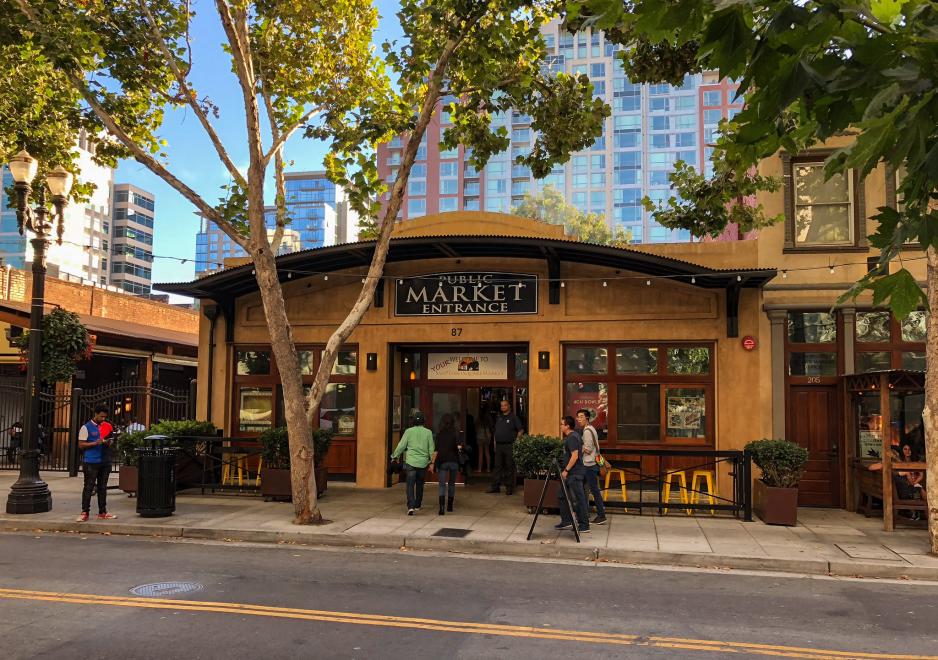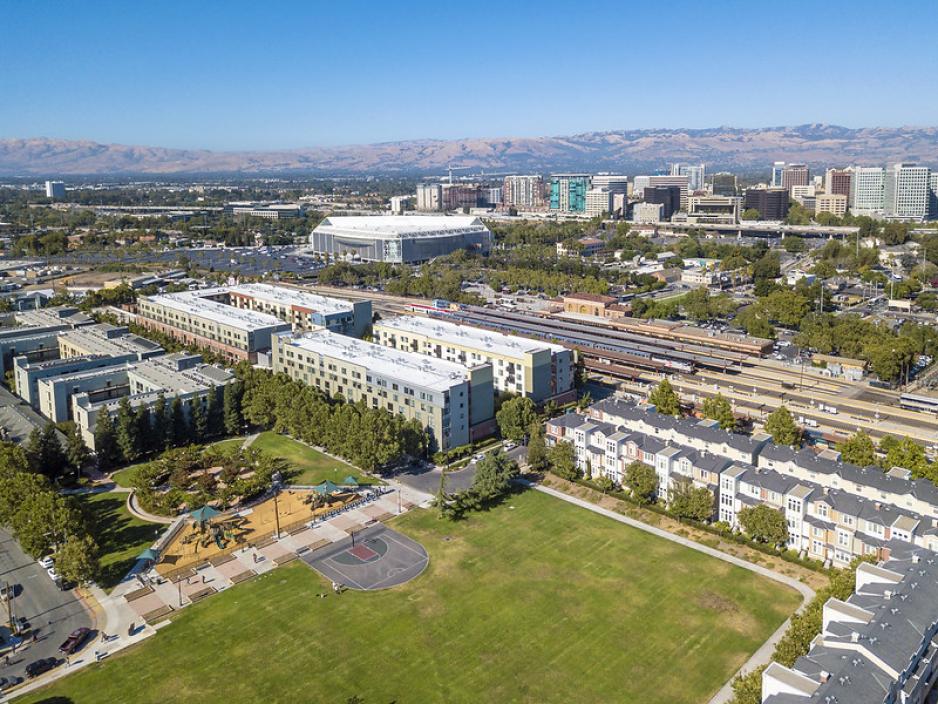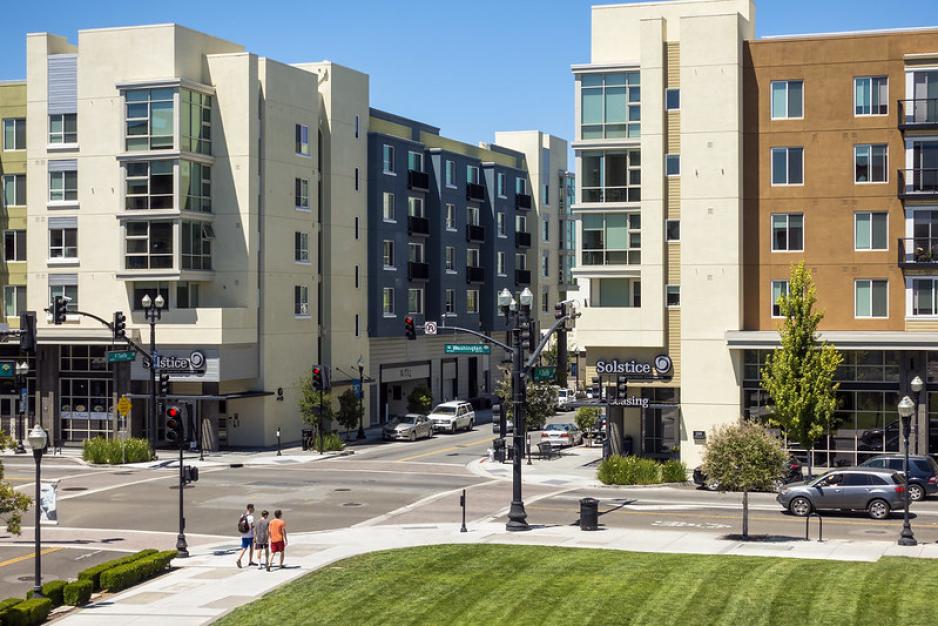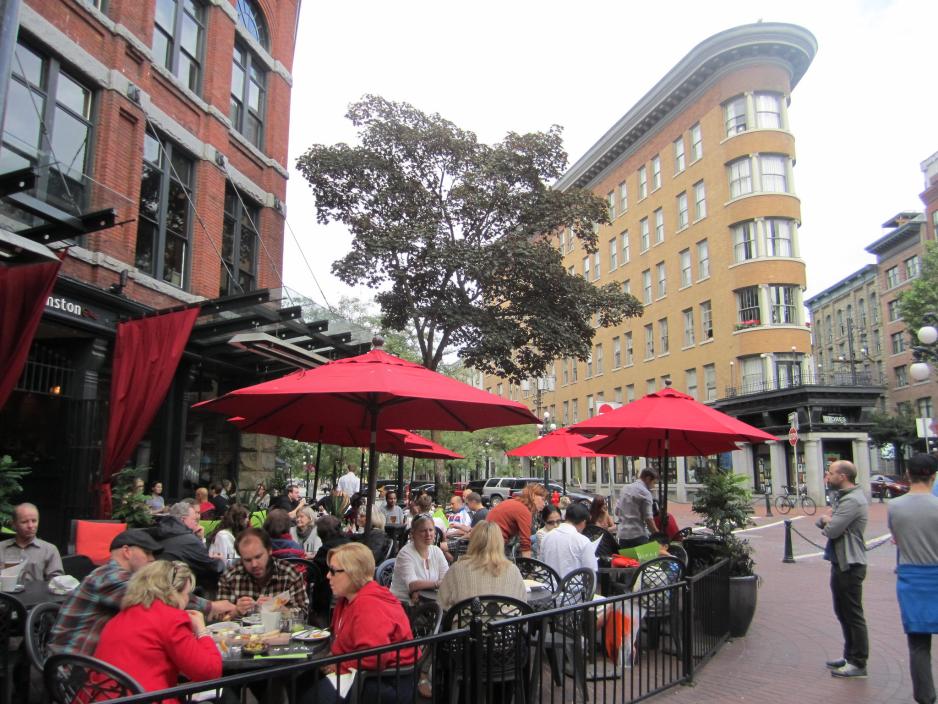Mixed-use development offers people the ability to live, work, play, and connect all in one place, supporting vibrant neighborhoods. One main goal is generating the flexibility to work from home or close to home, in support of the idea of “15-minute” cities, where residents can find everything they need within 15 minutes of walking or biking.
- Establish a variety of districts with varying combinations of densities and intensities, to develop more vibrant and economically productive communities by supporting activity outside of standard business hours.
- Provide diversity in the range of uses so that mixing housing with retail, services, open space, institutional, educational, and office uses encourages activities outside of standard business hours.
Permit a complementary variety of land uses near one another to consolidate infrastructure costs and increase opportunities and incentives for people to walk, bike, and ride transit between activities.
Plan for neighborhood integration to ensure that new development and the proposed urban pattern provide a natural transition in size, scale, and character to adjacent neighborhoods.
Integrate Transportation Demand Management strategies and apply standards for the public realm that support transit ridership and provide high quality pedestrian spaces.
Acknowledge “18- and 24-hour” districts where non-residential activities continue beyond traditional working hours to support neighborhood vitality, including through design and planning for active “third places,” or social gathering areas, such as sidewalks, parks, and plazas.



